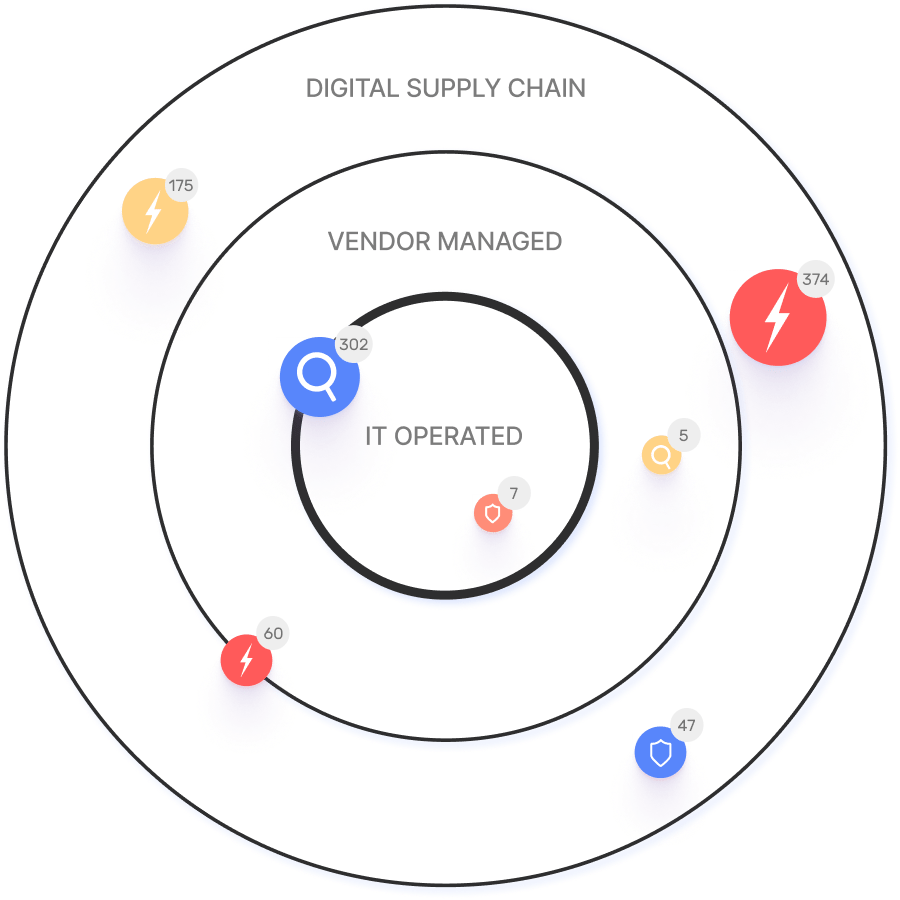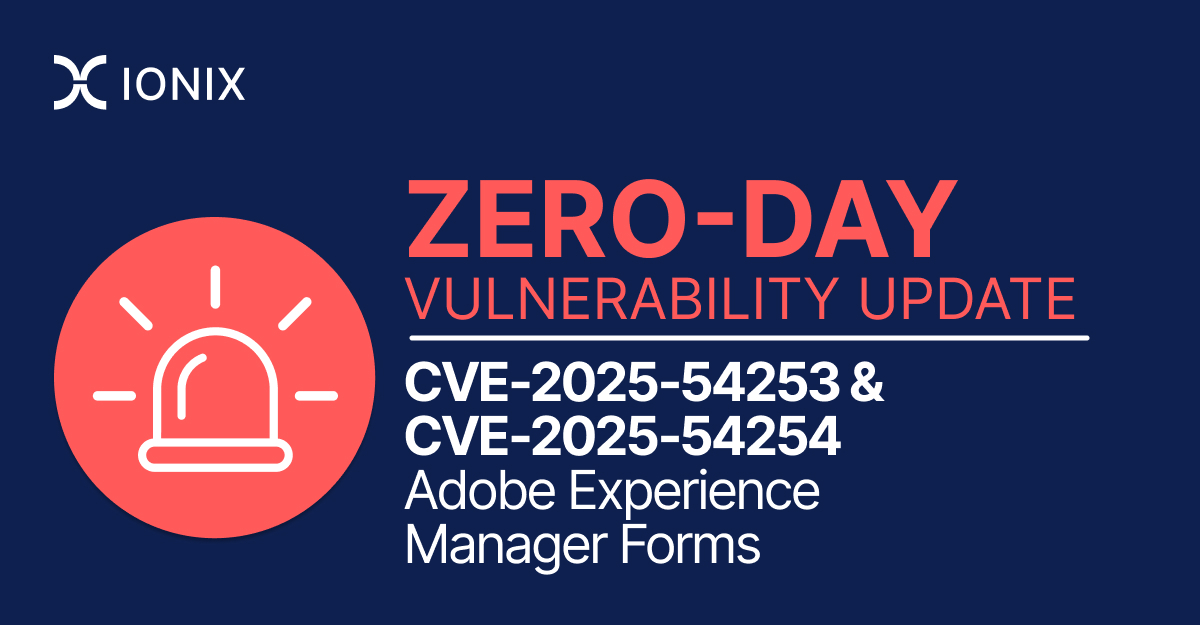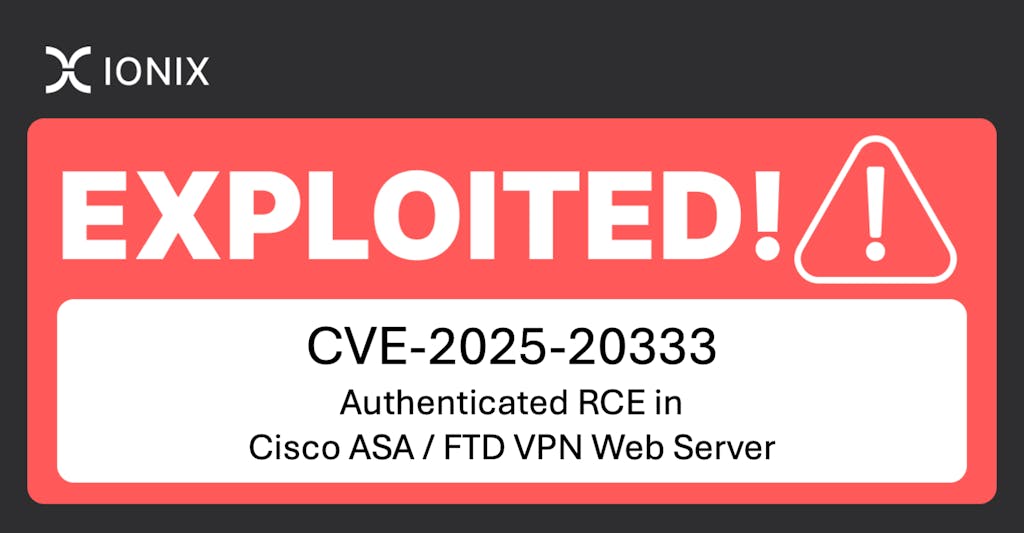Frequently Asked Questions
Product Information
What is IONIX and what does it do?
IONIX is an External Exposure Management platform designed to help organizations identify exposed assets and validate exploitable vulnerabilities from an attacker's perspective. It enables security teams to prioritize critical remediation activities by providing complete attack surface visibility, identifying potential exposed assets, validating those at risk, and prioritizing issues by severity and context. Learn more.
What are the main features of the IONIX platform?
The IONIX platform offers Attack Surface Discovery, Risk Assessment, Risk Prioritization, and Risk Remediation. It also provides continuous discovery and inventory of internet-facing assets, real attack surface visibility, proactive security management, and streamlined remediation workflows. See platform features.
What problems does IONIX solve for organizations?
IONIX addresses several key pain points: identifying the complete external web footprint (including shadow IT and unauthorized projects), enabling proactive security management, providing real attack surface visibility from an attacker's perspective, and ensuring continuous discovery and inventory of assets in dynamic IT environments. More details.
Who is the target audience for IONIX?
IONIX is designed for Information Security and Cybersecurity VPs, C-level executives, IT managers, and security managers. It is suitable for organizations across industries, including Fortune 500 companies.
Features & Capabilities
What are the key capabilities and benefits of IONIX?
Key capabilities include: complete external web footprint identification, proactive security management, real attack surface visibility, continuous discovery and inventory, and streamlined remediation. These help organizations improve risk management, reduce mean time to resolution (MTTR), and optimize security operations. Why Ionix.
What integrations does IONIX support?
IONIX integrates with Jira, ServiceNow, Slack, Splunk, Microsoft Sentinel, Palo Alto Cortex/Demisto, AWS Control Tower, AWS PrivateLink, and pre-trained Amazon SageMaker Models. For a full list, visit IONIX Integrations.
Does IONIX offer an API?
Yes, IONIX provides an API that supports integrations with major platforms such as Jira, ServiceNow, Splunk, Cortex XSOAR, and more. Learn more.
What technical documentation is available for IONIX?
IONIX offers technical documentation, guides, datasheets, and case studies on its resources page. Explore resources.
Security & Compliance
What security and compliance certifications does IONIX have?
IONIX is SOC2 compliant and supports organizations with NIS-2 and DORA compliance, ensuring robust security measures and regulatory alignment.
How does IONIX ensure product security?
IONIX is SOC2 compliant and implements robust security measures to support NIS-2 and DORA compliance, helping organizations meet regulatory requirements and maintain a strong security posture.
Implementation & Support
How long does it take to implement IONIX and how easy is it to get started?
Initial deployment of IONIX typically takes about a week and requires only one person to implement and scan the entire network. Customers have access to onboarding resources such as guides, tutorials, webinars, and a dedicated Technical Support Team. Read more.
What support and maintenance services does IONIX provide?
IONIX provides technical support and maintenance during the subscription term, including troubleshooting, upgrades, and maintenance. Customers are assigned a dedicated account manager and benefit from regular review meetings. More details.
What training and onboarding resources are available for IONIX customers?
IONIX offers onboarding resources such as guides, tutorials, webinars, and a dedicated Technical Support Team to assist customers during implementation and adoption. Learn more.
Performance & Recognition
How is IONIX rated for product performance and innovation?
IONIX earned top ratings for product innovation, security, functionality, and usability. It was named a leader in the Innovation and Product categories of the ASM Leadership Compass for completeness of product vision and a customer-oriented, cutting-edge approach. See details.
What feedback have customers given about IONIX's ease of use?
Customers have rated IONIX as user-friendly and appreciate having a dedicated account manager for smooth communication and support.
Use Cases & Customer Success
Who are some of IONIX's customers?
IONIX's customers include Infosys, Warner Music Group, The Telegraph, E.ON, Grand Canyon Education, and a Fortune 500 Insurance Company. See more customers.
What industries are represented in IONIX's case studies?
Industries include Insurance and Financial Services, Energy, Critical Infrastructure, IT and Technology, and Healthcare.
Can you share specific case studies or customer success stories?
Yes. For example, E.ON used IONIX to continuously discover and inventory internet-facing assets, Warner Music Group improved operational efficiency and security alignment, and Grand Canyon Education enhanced security by proactively discovering and remediating vulnerabilities. E.ON Case Study, Warner Music Group Case Study, Grand Canyon Education Case Study.
What business impact can customers expect from using IONIX?
Customers can expect improved risk management, operational efficiency, cost savings (via reduced mean time to resolution), and enhanced security posture. More details.
Competition & Differentiation
How does IONIX differ from other attack surface management solutions?
IONIX stands out with its ML-based 'Connective Intelligence' for better asset discovery and fewer false positives, Threat Exposure Radar for prioritizing critical issues, and comprehensive digital supply chain mapping. It also offers streamlined remediation and off-the-shelf integrations. Why IONIX.
Why should a customer choose IONIX over alternatives?
Customers should choose IONIX for its innovative features, reduced alert noise, validated risks, actionable insights, and operational efficiency. IONIX is recognized for product innovation and customer-oriented solutions. Learn more.
Blog & Knowledge Resources
Does IONIX have a blog and what topics does it cover?
Yes, the IONIX blog covers cybersecurity, risk management, vulnerability management, and continuous threat exposure management. Read the blog.
Who are some of the key authors on the IONIX blog?
Key authors include Amit Sheps and Fara Hain.
Vulnerabilities & Security Advisories
What are CVE‑2025‑54253 and CVE‑2025‑54254 vulnerabilities in Adobe Experience Manager Forms?
CVE‑2025‑54253 is a configuration-specific flaw in Adobe Experience Manager (AEM) Forms on JEE that allows arbitrary code execution (CVSS 8.6). CVE‑2025‑54254 is an XXE (XML External Entity) issue enabling file system disclosure (CVSS 10.0). Both were disclosed in August 2025, with public proof-of-concept exploits available. SecurityWeek summary.
How can CVE‑2025‑54253 be exploited?
CVE‑2025‑54253 can be exploited via misconfigured AEM Forms setups, such as insecure endpoints or permissive templates. Attackers can inject and execute malicious Java or scripting commands remotely, often by exploiting misconfigured templates to gain server-side execution. Example payloads are available in public PoCs.
What mitigation steps should be taken for CVE‑2025‑54253 and CVE‑2025‑54254?
Apply Adobe's emergency hotfixes immediately, restrict access to AEM Forms endpoints (e.g., via IP whitelisting or VPN), harden configurations (disable external entity resolution), and enable monitoring for anomalous XML processing or file access. Adobe's hotfix advisory.
How can I determine if I am impacted by CVE‑2025‑54253 and CVE‑2025‑54254?
You are impacted if you run AEM Forms version 6.5.23 or earlier. Misconfiguration in these versions allows remote arbitrary code execution and unauthorized file read. Immediate patching is strongly advised. Bleeping Computer summary.
Where can I find official details and resources about these vulnerabilities?
Official details are available on Adobe's security bulletin. Additional summaries and technical details can be found on Bleeping Computer and SecurityWeek.








